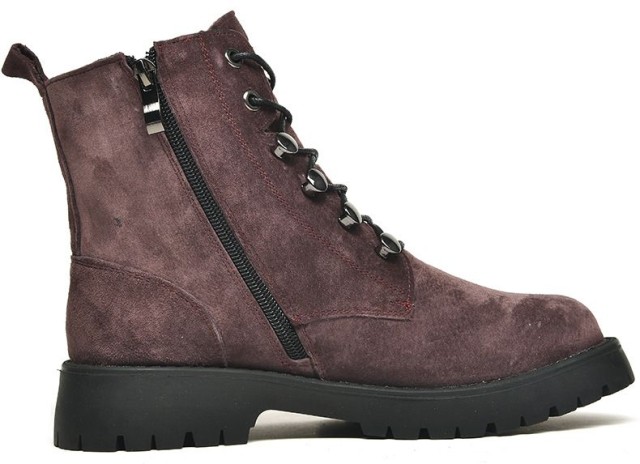For discerning footwear buyers and industry professionals, understanding construction methods separates premium products from disposable fashion. Goodyear welt construction represents the gold standard in durable shoemaking—a 150-year-old technique that continues to define excellence. This deep dive explores its mechanical advantages, historical roots, and why it remains the choice of heritage brands worldwide.
The Legacy of Charles Goodyear Jr.
Separating Myth from Machine: Charles Jr. vs. His Father’s Legacy
While Charles Goodyear Sr. pioneered vulcanized rubber, his son revolutionized footwear with an 1869 patent that automated welt stitching. This innovation addressed a critical need: creating shoes that could withstand repeated resoling without compromising structural integrity.
The 1869 Patent: Mechanics of the Welt Stitching Revolution
Goodyear Jr.'s system introduced three game-changing elements:
- Canvas Rib Reinforcement: A fabric strip cemented to the insole provides a stable base for welt attachment
- Leather Welt Barrier: This intermediary strip protects the upper leather during resoling
- Dual Stitching System: Machines simultaneously attach welt to upper and outsole for unparalleled durability
Historical records show this method reduced resoling costs by over 60% compared to hand-welted shoes, making quality footwear accessible beyond bespoke markets.
Goodyear Welt in Modern Shoemaking
Anatomy of Durability: Multi-Layer Construction Explained
Contemporary Goodyear welted shoes incorporate:
- Cork Filling: Lightweight material that molds to the wearer's foot over 30-60 wears
- Metal Shank: Maintains arch support while allowing natural flex
- Storm Welt Variants: Some designs add a raised lip for enhanced water resistance
This layered approach creates what cordwainers call the "shoe ecosystem"—where each component works synergistically. The cork layer, for instance, doesn't just cushion; its porous structure wicks moisture away from the foot.
Resoling Advantage: How Goodyear Welts Extend Shoe Lifespan
Industry data suggests Goodyear welted footwear achieves:
- 3-5x More Resoles than Blake-stitched equivalents
- 20-30% Longer Total Lifespan compared to cemented construction
- Adaptive Comfort: The cork bed continually recontours to foot shape
A 2020 cobbler survey revealed welted dress shoes averaged 12-15 years of service with proper care—outlasting their owners' fashion preferences in many cases.
Beyond the Hype: Practical Comparisons
Goodyear vs. Blake Stitch: Trade-Offs in Flexibility and Water Resistance
| Feature | Goodyear Welt | Blake Stitch |
|---|---|---|
| Water Resistance | Superior (multi-layer) | Moderate |
| Flexibility | Moderate | High |
| Resole Potential | Excellent | Limited (3-4 times max) |
| Break-in Period | Longer (40+ wears) | Shorter (15-20 wears) |
Blake construction excels in lightweight dress shoes, while Goodyear dominates in foul-weather boots and heavy-duty leather footwear.
Case Studies: Heritage Brands Leveraging Welted Construction
- English Tannery Boots: Use storm welts with beeswax-treated threads for North Sea fishing conditions
- Alpine Trekking Shoes: Combine Goodyear welts with Vibram soles for mountain terrain
- Urban Commuter Styles: Feature hidden welt channels for sleek aesthetics without sacrificing durability
These adaptations prove the construction's versatility across climates and use cases.
Why This Matters for Footwear Professionals
For distributors and brand owners, specifying Goodyear welt construction means:
✅ Higher Perceived Value: Commands 25-40% price premiums in luxury markets
✅ Sustainability Appeal: Aligns with circular economy principles through decades of use
✅ Reduced Returns: Structural failures plummet to under 2% in quality-controlled production
At 3515, we integrate traditional welt craftsmanship with modern efficiency across our footwear lines—delivering products that honor heritage while meeting contemporary demand.
Explore our Goodyear welt-capable production lines to develop footwear that withstands both trends and time. Let's craft tomorrow's heirlooms together.
"The silent luxury of shoes that age beautifully isn't accidental—it's engineered." — Cordwainer's Guild Annual Report
Related Products
- Wholesale Customizable Suede Safety Boots - Puncture-Proof with Velcro Closure
- Durable Leather Work Boots Wholesale Manufacturer & Custom Factory
- Wholesale Durable 6-Inch Work Boots | Custom & Private Label Manufacturer
- Durable Mid-Cut Tactical Boots for Wholesale & Private Label
- Wholesale Durable Mid-Cut Tactical Boots for Custom & Private Label Brands
Related Articles
- How to Choose Work Boot Materials for Maximum Safety and Durability
- How to Choose Work Boots That Balance Safety, Comfort, and Durability for Your Job
- How to Choose Work Boots That Match Your Job Demands and Safety Needs
- Matching Men’s Work Shoe Safety Technologies to Workplace Hazards
- Work Boots vs. Western Boots: How to Choose the Right Footwear for Labor Safety


















